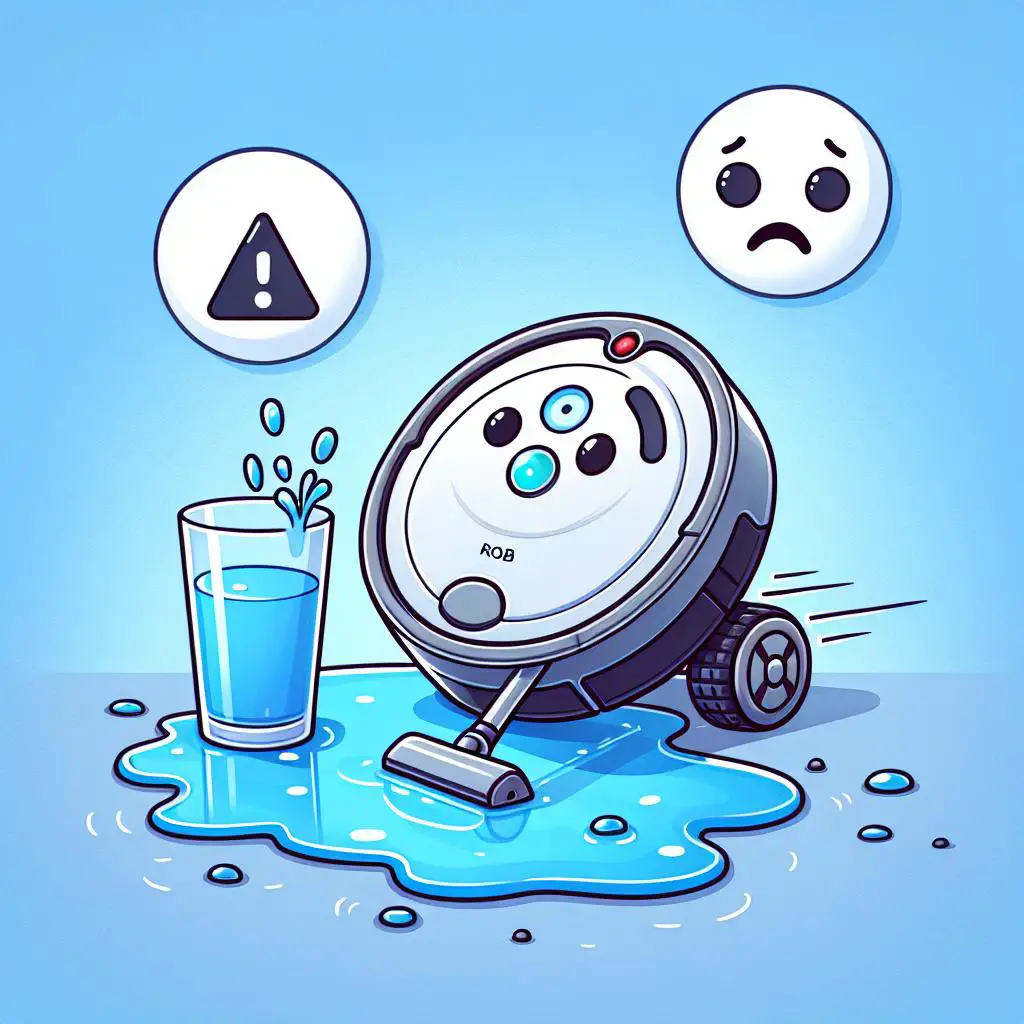Are you the proud owner of a Roomba? If so, then you’ve probably experienced your fair share of spills and splashes. Don’t worry – this blog post is here to help you out! We’ll cover everything from preventing water damage in the first place to dealing with it if it does occur. Keep reading to find out how to prevent and repair any Roomba water damage.
Determine the Source of the Water Damage
Determining the source of water damage is essential for restoring your Roomba. Unfortunately, iRobot does not cover water-damaged Roombas unless otherwise stated. To repair water damage in your home and prevent further damage, you need to first find out where the water is coming from. Common sources include burst pipes or a leaking water heater. You may also notice bubbling around the edges of laminate flooring, discoloration on wood furniture, or split or swollen wood from direct water damage. If it is not clear where the source of the water is coming from, contact a water damage restoration company for assistance. They can help you identify any issues and take steps to fix them quickly using genuine parts before more significant problems arise. In cases of severe water damage, iRobot may not be able to respond properly so it is important to check if the green light is still lit on your Roomba before attempting any repairs yourself. If you are unable to get a response from your Roomba, it may be best to contact iRobot directly for advice on how to proceed with repairing any potential water damage.
Clean Up Any Visible Standing Water
It is important to clean up any visible standing water as soon as possible when dealing with Roomba water damage. This will help minimize the extent of the damage and reduce the risk of further damage to the device. Cleaning up any standing water should be done by using a wet/dry vacuum, mop, or towel to absorb and remove the liquid. Once all of the visible standing water has been removed, use a cloth or paper towels to wipe away any remaining moisture from surfaces. Finally, make sure to thoroughly dry all surfaces before continuing with repairs.
Unplug Your Roomba Immediately
If your Roomba comes into contact with water, it’s important to unplug it immediately and take measures to prevent damage. Water entering the Roomba can cause damage to the motherboard and battery, resulting in decreased performance and a shortened lifespan. To reduce the possibility of damage, make sure your Roomba is stored in a dry place and keep any liquids away from it. Additionally, if your Roomba has been exposed to water or moisture, allow it to cool down before attempting to charge it again. If you notice that your Roomba isn’t charging properly after being exposed to water or moisture, you may need to replace the battery or charger.
Check for Corrosion or Damage to Components
It is important to check for corrosion or damage to components when dealing with iRobot Roomba water damage. Water can lead to oxidization and corrosion, which can cause irreversible harm to the device’s components. To avoid this, always remove any batteries, power connectors, or power supplies before attempting to clean the device. Look for any white residue that could indicate water corrosion and check for major corrosion or damages on the pins of all connectors and components. Hardening steel with high carbon content is also a great way to protect electronics from water damage. Additionally, if you have left your car in the same spot for too long, condensation (in the form of water vapor) can also lead to corrosion and should be avoided at all costs. Lastly, make sure that any harsh chemicals used during cleaning are safe for use on electronic devices.
Dry Out Circuits and Motors with a Hairdryer
Dry Out Circuits and Motors with a Hairdryer Roomba Water Damage is an issue that can occur when Roomba is exposed to water. To dry out the circuits and motors, use a hairdryer set to low heat. Place the hairdryer about 12 inches away from the Roomba and direct the flow of air over the surfaces of the robot. Make sure you keep it moving to avoid overheating any components. It may take several minutes for the Roomba to completely dry out. Once done, inspect for any lint or debris that has built up on blower cover and wipe off with a clean, dry cloth. Follow this process whenever your Roomba has been exposed to water to ensure optimal performance.
Check for Leaks in the Battery Pack
It is important to regularly inspect your battery pack for any signs of damage or leakage. Do not charge a damaged or leaking battery pack and do not allow the liquid to come in contact with any surfaces. If you find that your battery pack is leaking, return it to an authorized service center immediately.
The Roomba 692 has a 90-minute battery life and is equipped with a water leak system similar to Belkin’s. It also has a specialized water tank test that has been employed in the factory before delivery, so make sure you check for any leaks before using it. If you find that your robot vacuum cleaner works fine when wet but no longer seems capable of detecting objects and avoiding them, check its sensor first.
Disassemble and Clean Internal Parts
Disassembling and cleaning the internal parts of your Roomba is important in order to ensure that it functions properly and prevents water damage. First, remove the dustbin and empty it into the trash. For long-term storage, also remove and store the battery in a cool, dry place as your Roomba contains electrical parts. DO NOT submerge or spray water onto any part of your Roomba as this could cause permanent damage.
To clean the internal parts of your Roomba, begin with checking for any debris lodged into brushbars or filters. To do this, first disconnect Roomba from power source before accessing the internal parts. Clean all debris off of the brushbar and from inside the filter chamber using a dry cloth only or a soft brush if needed. If you find any damaged parts such as roller brushes or filters; replace them with authentic iRobot 4636432 Replacement Parts or contact our Vacuum Cleaning and Repair Service team for assistance at an additional fee of $49.99.
For best performance, regularly disassemble and clean your Roomba’s inner bumper module to ensure that it is functioning properly which will prevent water damage from occurring in future use.
Replace Batteries if Necessary
If your Roomba has been exposed to water damage, it’s important to replace the batteries as soon as possible. This will help reduce any further damage that may occur due to the moisture. To replace the batteries, simply remove the old ones and insert new ones. Make sure the polarity is correct when inserting them into the device. Once done, you should be able to power on your Roomba and resume using it as normal.
Test Mechanical Components
Testing mechanical components of the Roomba for water damage is a necessary step for its proper functioning. The first step is to perform a Built-In-Test (BiT) which involves reinserting all Roomba components such as bearings, brushes, wire guard, and side F1-mechanical. To ensure accuracy and thoroughness of the test, a 180o LIDAR setup as shown in Figure 18 should be employed by the team. Additionally, two Logitech MX Mechanical keyboards should also be used to log results. Once these steps are completed, any signs of water damage can be identified and addressed accordingly.
Test Electronics Components
Testing electronics components for Roomba water damage requires a multimeter and other tools. First, make sure to clean any electrical contacts on the Roomba and Home Base with an alcohol pad or similar cleaning agent. Then, test all resistors, opto-couplers, and parallel resistors with the multimeter in the “open” position. If any of the components are damaged or not functioning properly, they should be replaced. Additionally, check for power supply issues by testing with a 5-inch rainbow glitter lamp and clear liquid/gold base. Lastly, check for water damage by visually inspecting all components and connections for signs of corrosion or rust. By following these steps, you can ensure that your electronics components are safe from water damage.


